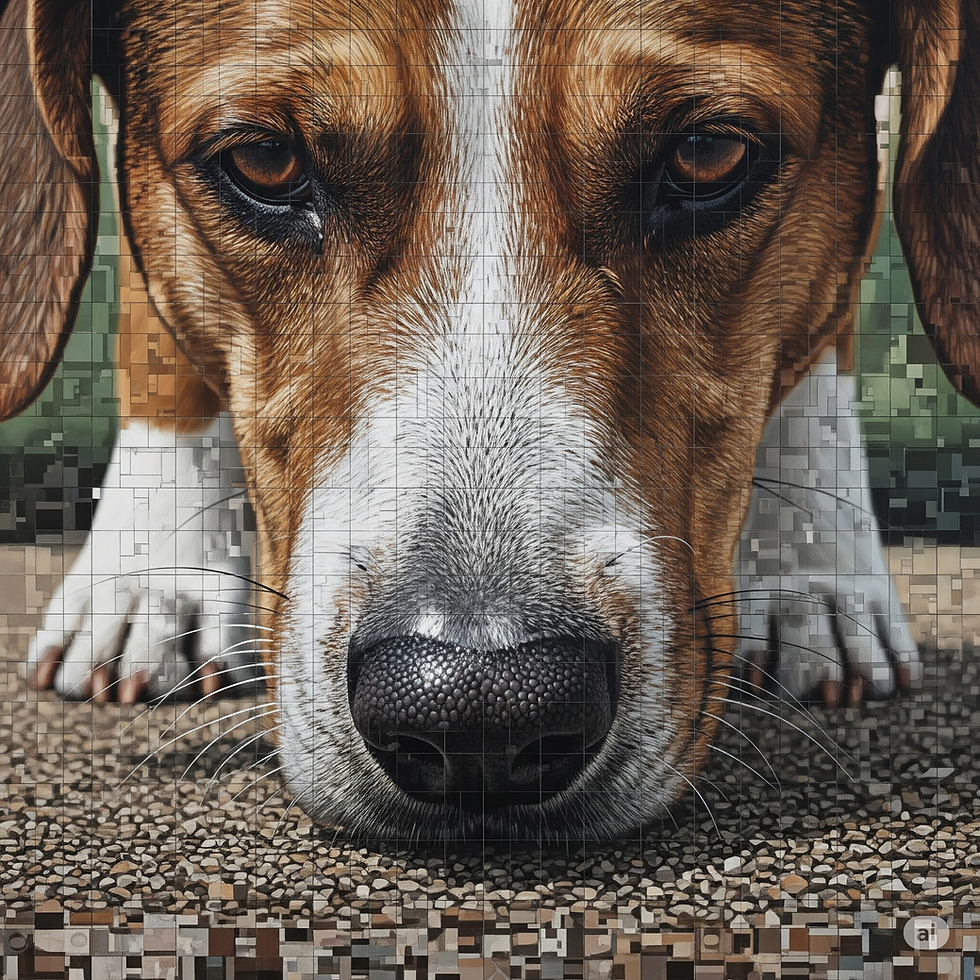Life Rewards: What are they and how can you use them for your training?
- Ashley Anderson
- Jul 16
- 4 min read

Treats are convenient, easy to deliver, and highly motivating for most dogs, which makes them ideal for teaching your dog new behaviors. When your dog is learning something they don’t yet understand, treats help communicate quickly and clearly that they’ve done the right thing. But once your dog understands what you’re asking for, you don’t always have to rely on treats to keep the behavior strong. Allow us to introduce you to the power of using life rewards to reinforce behaviors you would like your dog to do.
What are life rewards?
Life rewards are anything your dog wants. Think about what your dog lives for. Is it their favorite ball? Belly rubs? Running zoomies in the yard? Jumping in the pool? Chasing squirrels? Hanging out with their favorite people? All of these can become rewards for good behavior.
Once your dog understands a behavior — meaning they can do it easily and confidently when asked — you can start to ask for that behavior in exchange for something they’re already excited about. If your dog doesn't know the behavior yet, you'll want to teach it first using treats and clearly mark the right choice (check out our video Marker Training For Dogs). Once they know it, then you can swap to life rewards.
The highlight of my dog Heidi’s day is when her dad comes home from work. One of her most reliable behaviors is sitting calmly and waiting upstairs with me while he puts his things down, comes upstairs, and gives her a special release cue (a word that tells your dog that they are free to move after waiting) that means it’s okay to run to him and greet him enthusiastically, which he also loves. Greeting her dad is the life reward for sitting and waiting for her greeting cue, and to Heidi, it’s super worth it.
The more rewards you have available to reinforce your dog’s good behavior throughout your everyday life, the more opportunities you’ll have to teach your dog that good behavior really pays off for them, which makes the good behavior more reliable. It's really satisfying to see your dog offering polite behavior because they know it’s how they get to the good stuff.
Ways to Use Life Rewards?
Here are some easy ideas you can start using right away:
Ask for a hand target before you throw the ball. (If you haven't taught this yet, it's a fun and easy skill to introduce! It just means your dog learns to boop your palm with their nose when you present your hand. Check out our video How to Teach Your Dog To Target)
Ask them to sit before you pet them or give attention.
Ask them to wait before inviting them onto the couch or bed.
Ask them to sit before opening the door to go outside.
Ask them to stay before letting them walk through the open door.
Wait for calm behavior (standing or sitting quietly) before you greet them when you come home.
Ask for eye contact before putting their dinner bowl down.
Ask them to wait before letting them out of the car.
Wait for a check-in (where your dog looks back at you voluntarily) before allowing them to greet a new friend.
Ask for eye contact before you give permission to sniff that amazing patch of grass.
Ask them to sit before putting on or taking off their leash.
Ask them to lay down before opening the crate or kennel door.
Wait for the leash to be loose (hanging in a relaxed J-shape) before moving forward on your walk.
(If you notice your dog doesn’t yet offer behaviors like check-ins or loose leash walking easily, you might want to practice with treats first to build the behavior, and then start using real-world rewards. Check out our video How To Teach Your Dog Loose Leash Walking)
Things to Remember
It’s important to set your dog up for success. Make sure they know the behavior you're asking for before you make it the requirement for getting something they want. And just as important — manage the environment so your dog doesn’t get to reward themselves without meeting the criteria.
For example, if you're practicing a wait at the door, check the other side first for distractions like other dogs, squirrels, or loud noises, and be ready to gently close the door if they try to bolt. If the environment is too exciting for your dog to succeed, practice with a less exciting doorway first. The goal is to make good choices easy for your dog, not frustrating or impossible.
Once you start looking for ways to incorporate life rewards into your day with your dog, teaching them becomes less about “training sessions” and more about moving through the world in a way that works for both of you. You’ll not only reinforce great manners, but you’ll also build a stronger, more joyful connection with your dog!



Comments